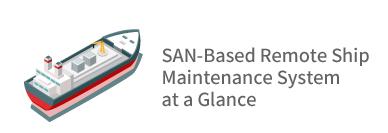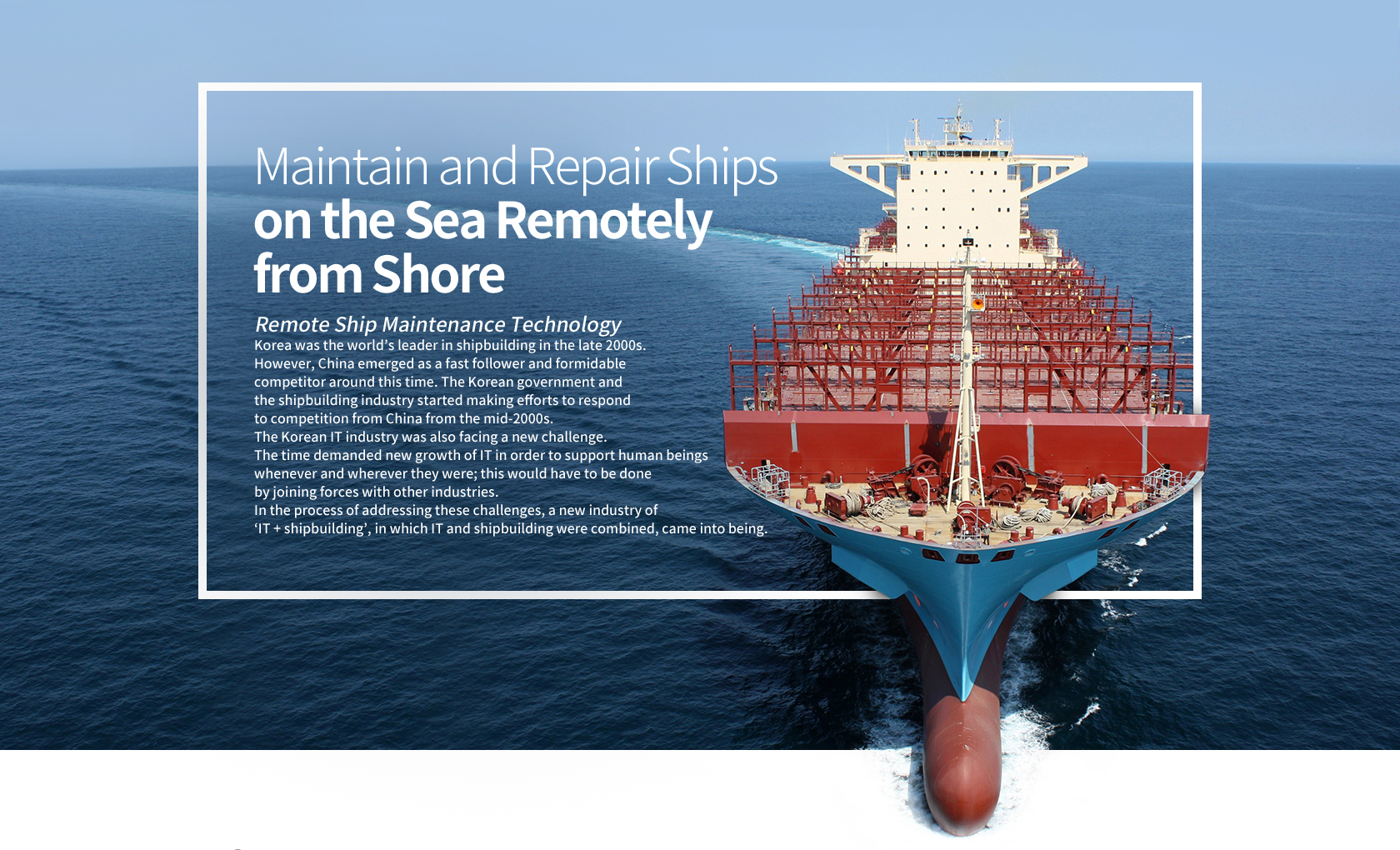


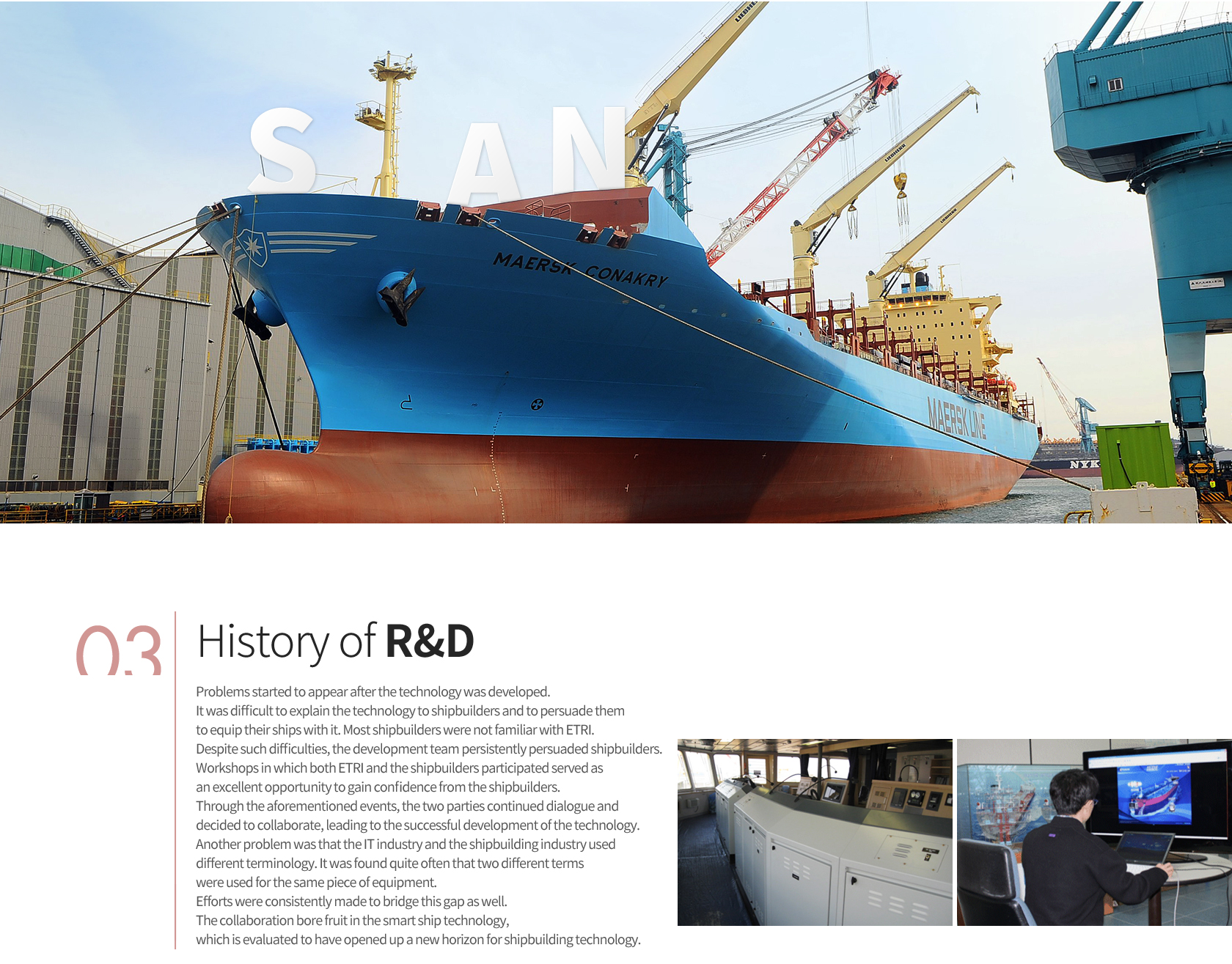

Maintain and Repair Ships
on the Sea Remotely
from Shore
Remote Ship Maintenance Technology
Korea was the world’s leader in shipbuilding in the late 2000s. However, China emerged as a fast follower and formidable competitor around this time. The Korean government and the shipbuilding industry started making efforts to respond to competition from China from the mid-2000s. The Korean IT industry was also facing a new challenge. The time demanded new growth of IT in order to support human beings whenever and wherever they were; this would have to be done by joining forces with other industries. In the process of addressing these challenges, a new industry of ‘IT + shipbuilding’, in which IT and shipbuilding were combined, came into being.
01
Smart
Ship Technology
To ensure safety and to prevent vessel disasters, it is essential to implement thorough management from the design, to manufacturing and building, and on to maintenance. It is also important to optimize navigation systems. Even from the perspective of ICT, there was great need to address preexisting issues in the maritime practices. This is why the ‘Remote Ship Maintenance System Based on Ship Area Network,’ developed back in 2011, gained attention.
Jointly developed by ETRI and Hyundai Heavy Industries, the technology allows remote ship maintenance by remotely monitoring a ship operating at sea and its equipment, diagnosing their condition, and addressing any issues online, all from shore. An integrated dashboard is used for this purpose; it displays and monitors the conditions of a ship in operation, including its engines, sensors, and steering gear. It can even be used to remotely maintain and repair problem areas as required.
In the past, when there was an issue with equipment on board, maintenance staff from the manufacturer boarded the ship to identify the cause and to take action accordingly. However, it is realistically impossible to have top-level maintenance experts on board all vessels operating not only in the waters surrounding the Korean Peninsula but also in the five oceans.
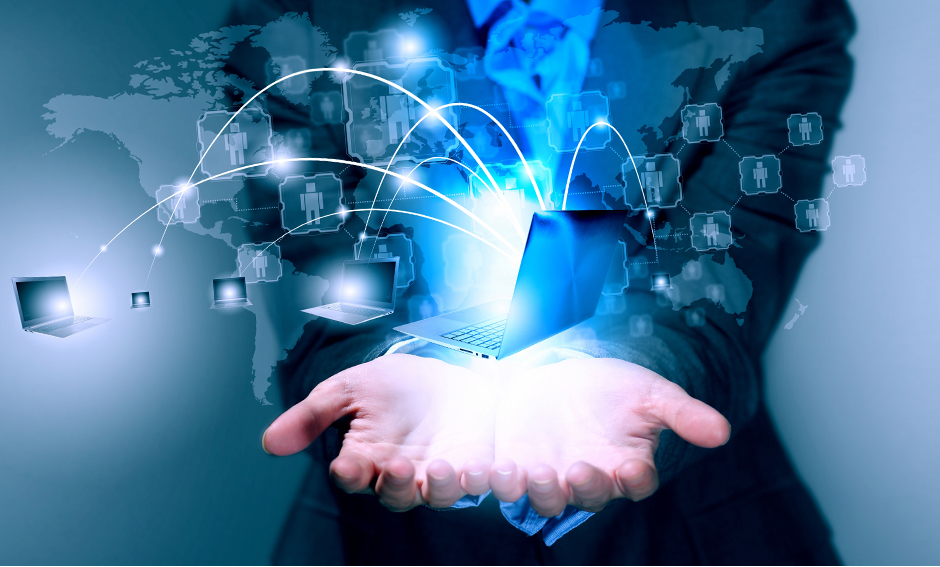
02
‘Smart Ship’
Equipped with Cutting-Edge IT
The ‘Remote Ship Maintenance System Based on Ship Area Network’ is largely divided into four components – a remote maintenance software platform, web-based ship maintenance interface, ship equipment integrated gateway hardware, and communication technology on and off board. Among these, the remote maintenance software platform, which is middleware that enables collection of ship equipment data and monitoring of this data on shore, is at the core of the system. Previously, maintenance staff had to be physically in front of ship equipment to check its condition. However, there are as many as 460 pieces of equipment aboard a single ship; these equipment are divided into 8 groups, and maintenance personnel could monitor each equipment’s status and condition only through monitors for each group. For example, the engines, which are the heart of a ship, could be monitored and controlled only in the engine room next to the engines.
Web-based ship maintenance interface technology enables monitoring of ship data on shore, allowing ship maintenance staff to view ship data anytime and anywhere promptly using any PC nearby. The technology also includes the ship equipment integrated gateway hardware, which is a type of applied router connecting different devices and equipment on board, as well as on and off ship communication technology to enhance reliability of communication among ship equipment and between intra-ship integrated gateway (ISIG) and server systems on shore.
The greatest achievement of this technology is its successful commercialization. It has been introduced to the alarm monitoring system (AMS), an important piece of shipbuilding IT equipment of Hyundai Heavy Industries, and has been deployed to a total of 120 commercial vessels, 40 of which belong to AP Moller of Denmark, the world’s biggest container shipping company. ETRI hopes that the ‘Remote Ship Maintenance System Based on Ship Area Network’ in which Korea’s two major industries – shipbuilding and IT – when combined will help realize economical operation and efficient management of ships and assurance of safety through thorough maintenance.
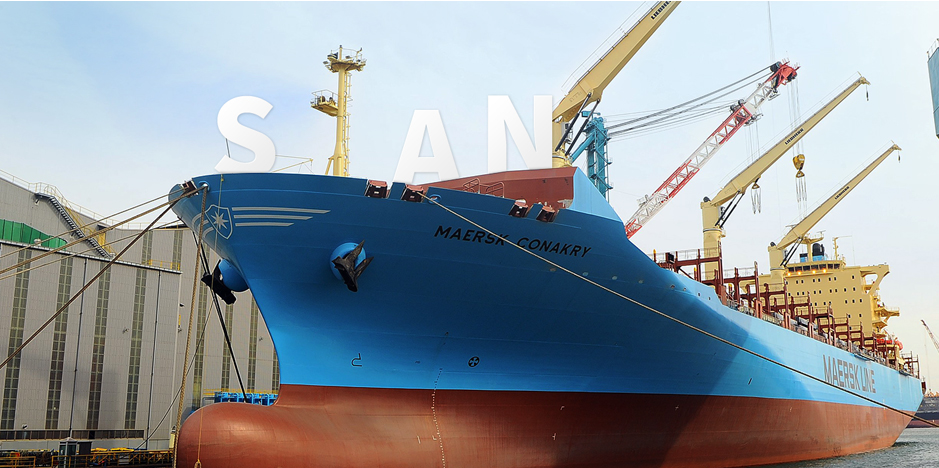
03
History of R&D
Problems started to appear after the technology was developed. It was difficult to explain the technology to shipbuilders and to persuade them to equip their ships with it. Most shipbuilders were not familiar with ETRI. Despite such difficulties, the development team persistently persuaded shipbuilders. Workshops in which both ETRI and the shipbuilders participated served as an excellent opportunity to gain confidence from the shipbuilders. Through the aforementioned events, the two parties continued dialogue and decided to collaborate, leading to the successful development of the technology. Another problem was that the IT industry and the shipbuilding industry used different terminology. It was found quite often that two different terms were used for the same piece of equipment. Efforts were consistently made to bridge this gap as well. The collaboration bore fruit in the smart ship technology, which is evaluated to have opened up a new horizon for shipbuilding technology.








